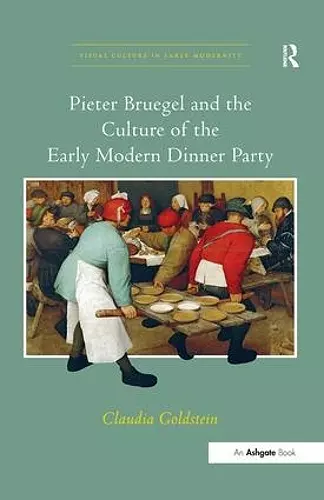Pieter Bruegel and the Culture of the Early Modern Dinner Party
Format:Hardback
Publisher:Taylor & Francis Ltd
Published:28th Apr '13
Currently unavailable, and unfortunately no date known when it will be back
This hardback is available in another edition too:
- Paperback£56.99(9781138246003)

Mining a rich, interdisciplinary mix of sources, including stoneware jugs, personal correspondence, paintings, inventories, and literature written for the dining room, this study offers a critical and entirely original examination of the function of early modern images for the people who owned and viewed them. The study explores the emergence, functions and material culture of the Antwerp dinner party during the heady days of the mid-sixteenth century, when Antwerp’s art market was thriving and a new wealthy, non-noble class dominated the city. The author recontextualizes some of Bruegel’s work within the cultural nexus of the dining room, where material culture and theatrical performance met humanist wit and the desire for professional advancement. The narrative also touches on the reception of Northern art in Lombardy, on intersections among painting, material culture, and theater, and on intellectual history.
Winner of the 2013 Joop Witteveen Prize
'Claudia Goldstein's book explores a fascinating and important topic. In focusing on dinner parties in sixteenth-century Antwerp, Goldstein contextualizes some of Bruegel's paintings by examining patronage, intellectual history and the history of food and feasts. Goldstein explores fine art and material culture, letters and books, inventories and archives. Her research is thorough, her conclusions sound, her writing style is clear and lively, and she crosses disciplinary boundaries to contribute original ideas to the study of early modern Europe.' Diane Wolfthal, Minter Chair in the Humanities and Professor of Art History, Rice University
'In Pieter Bruegel and the Culture of the Early Modern Dinner Party, Claudia Goldstein demonstrates that a sixteenth-century dinner in Antwerp was an affair of ostentation and a performance of prestige. Every aspect and object of the dining room, from paintings to spoons to tablecloths, was an element that worked toward establishing the backdrop for a dining event that would display the host’s social status. Goldstein tells the compelling story of Jan Noirot, an Antwerp Mint master who owned a number of paintings by Bruegel and whose property had to be sold after he declared bankruptcy and skipped town.' Renaissance Quarterly
'This study offers a unique perspective on the subject of early modern dinner parties through an examination of performance, audience, expectations, space, and iconography. Despite the growing scholarly interest in food and dining, it remains common for both art and food historians to neglect, or simply overlook, material culture. Goldstein rectifies this disparity through an exploration of people, decoration, dining implements, and the physical places they inhabited. A reader could ask for no more intriguing subject than this.' Sixteenth Century Journal
ISBN: 9780754667322
Dimensions: unknown
Weight: 635g
192 pages